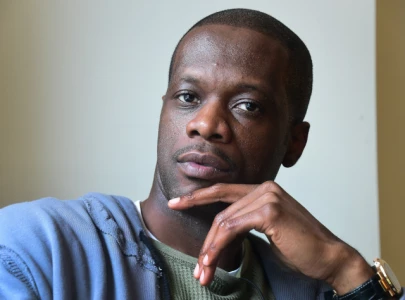
The earthen pots, some of which resemble traditional water jars, are designed not for containing liquids but to relieve the stresses of urban life, such as noise, traffic and pollution. “When logic fails to explain, it becomes natural to scream. The pots reflect many conditions that we are faced with, often unexplained with logic,” said Golkar, shortly after his exhibition opened.

Gallery creator Sohrab Kashani said the space has been packed with stylish Iranians screaming into vessels of various shapes and sizes. Some are designed to amplify sound, some to mute, but all made with the same clay that is typical of parts of Iran.
Golkar, who had avoided exhibiting in Tehran for many years, had decided to return to the country because the time was right. “I was physically gone for a long time but mentally never left. To come back and engage actively and not as a passive tourist was a true privilege,” he said.
He, like many contemporary artists who have departed from traditional mediums such as painting and sculpture, had difficulty finding a place to work with experimental and performance-based mediums. But when Sazmanab, a privately-funded art centre founded by Kashani, stepped in, things took a favourable turn.
Kashani, a self-taught artist and curator, set up the centre in 2009 to counter the ‘dearth of contemporary art studies’ in Iranian universities. The art centre is one of dozens of privately owned galleries to be set up in the last 10 years in Tehran, mostly in the northern, wealthier parts of the city of about eight million. Sazmanab, however, is downtown, close to Iran’s universities and the former embassy of the United States.
“We want to reach people who aren’t just in the art scene,” Kashani said. More than 500 people, including students, artists, industrial workers and their families visited Sazmanab to see the Screaming Pots exhibition, which runs until Friday.

Much of Iranian art conforms to Iran’s political and religious narratives and is commercially risky for artists to strike out on their own, even though some do. “Iran’s art scene, I felt, is at a crossroad where engaged and critical artists seem to be frustrated with its art market and want to go beyond that,” Golkar said.
Published in The Express Tribune, November 12th, 2014.
Like Life & Style on Facebook, follow @ETLifeandStyle on Twitter for the latest in fashion, gossip and entertainment.

















COMMENTS
Comments are moderated and generally will be posted if they are on-topic and not abusive.
For more information, please see our Comments FAQ